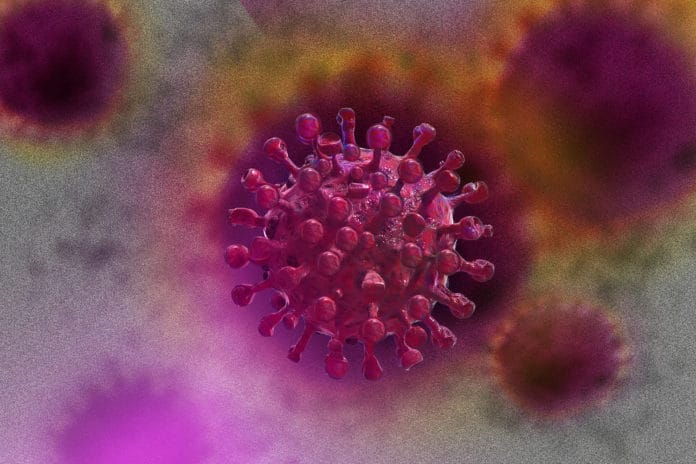Until now, it was believed that the SARS-CoV-2- virus that causes COVID-19- uses the SARS-CoV receptor ACE2 for host cell entry. But, a new study contradicts that belief, suggesting that SARS-CoV-2 can enter cells through another route – one that does not require ACE2.
The ability to utilize an alternative entry opens up the possibility of evading COVID-19 antibodies or vaccines, yet the scientists didn’t find evidence of such evasion. Notwithstanding, the revelation shows that the virus can change in unexpected ways and find new approaches to cause infection.
Co-senior author Sebla Kutluay, Ph.D. assistant professor of molecular microbiology, said, “This mutation occurred at one of the spots that change a lot as the virus circulates in the human population. Most of the time, alternative receptors and attachment factors simply enhance ACE2-dependent entry. But in this case, we have discovered an alternative way to infect a key cell type — a human lung cell — and that the virus acquired this ability via a mutation that we know arises in the population. This is something we definitely need to know more about.”
Usually, scientists study SARS-CoV-2 in primate kidney cells because the virus grows well in them. In this study, scientists decided to study the virus in the lung or other cells similar to those naturally infected. They screened a panel of 10 lung and head-and-neck cell lines to figure out more relevant cells capable of growing SARS-CoV-2.
Co-senior author M. Ben Major, Ph.D., said, “The only one that was able to be infected was the one I had included as a negative control. It was a human lung cancer cell line with no detectable ACE2. So that was a crazy surprise.”
Scientists discovered that the virus picked up a mutation. The virus that was obtained from a person in Washington state with COVID-19 was grown over time in the laboratory. It had acquired a mutation that led to a single amino acid change at position 484 in the virus’s spike protein.
SARS-CoV-2 uses spike to attach to ACE2, and position 484 is a hot spot for mutations. Various mutations at the same position have been found in viral variants from people and mice and in viruses grown in the lab. Some of the mutations found in virus samples taken from people are identical to Kutluay and Major found in their variant. The Alpha and Beta variants of concern have mutations at position 484, although those mutations are different.
Major said, “This position is evolving over time within the human population and in the lab. Given our data and those of others, the virus may be under selective pressure to get into cells without using ACE2. In so many ways, it is scary to think of the world’s population fighting a virus that is diversifying the mechanisms by which it can infect cells.”
By screening panels of antibodies and blood serum with antibodies from people, scientists determined whether the ability to use an alternative entry pathway allowed the virus to escape COVID-19 antibodies or vaccines. There was some variation, but in general, the antibodies and blood sera were effective against the virus with the mutation.
However, it remains unclear whether the alternative pathway comes into play under real-world conditions when people are infected with SARS-CoV-2.
Before exploring the answer to that question, finding the alternative receptor that the virus is using to get into cells.
Kutluay said, “The virus may use ACE2 until it runs out of cells with ACE2, and then it switches over to using this alternative pathway. This might have relevance in the body, but without knowing the receptor, we cannot say what the relevance is going to be.”
Journal Reference:
- Pray-Chavez M, LaPak KM et al. Systematic analysis of SARS-CoV-2 infection of an ACE2-negative human airway cell. Cell Reports. June 23, 2021. DOI: 10.1016/j.celrep.2021.109364
